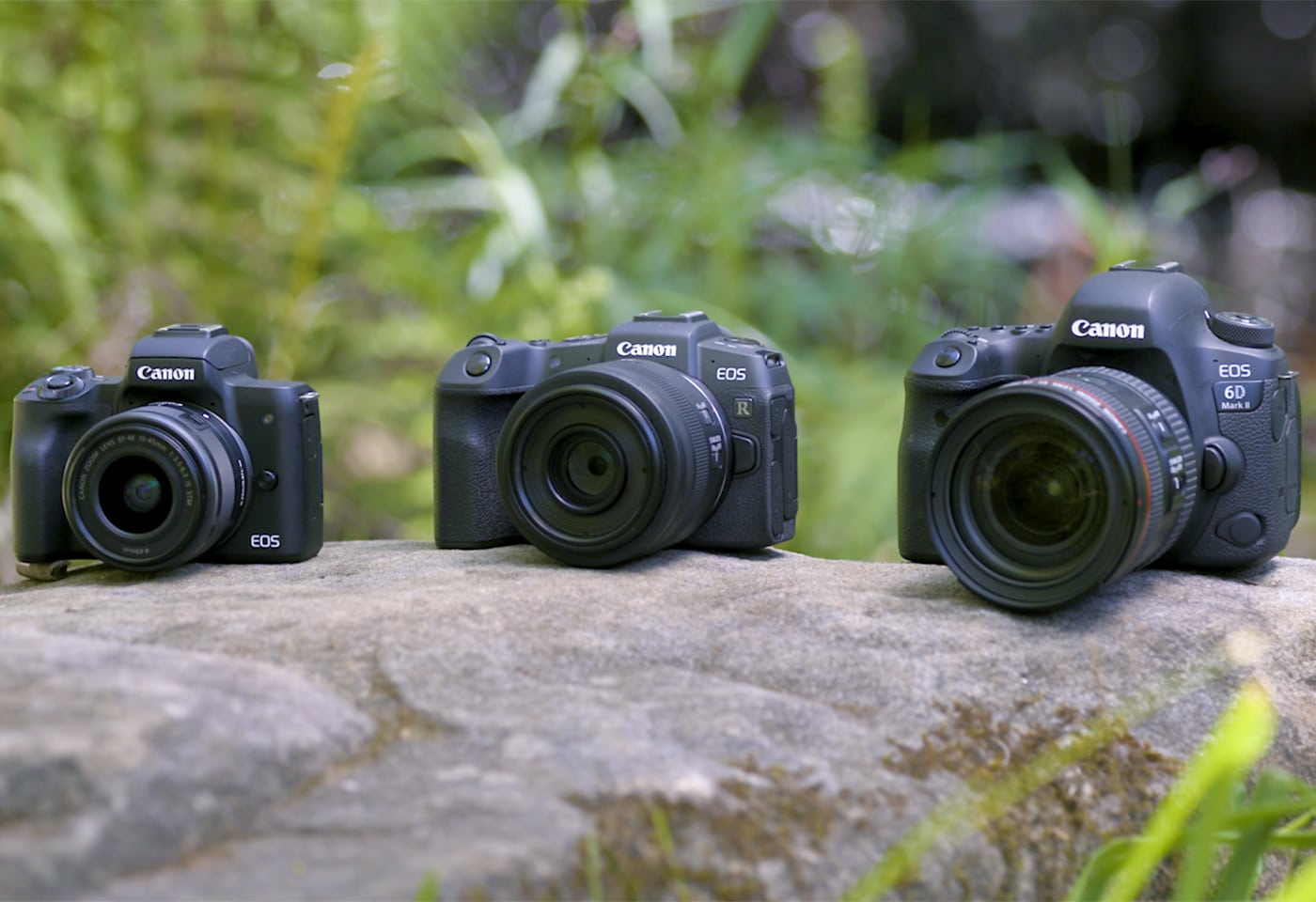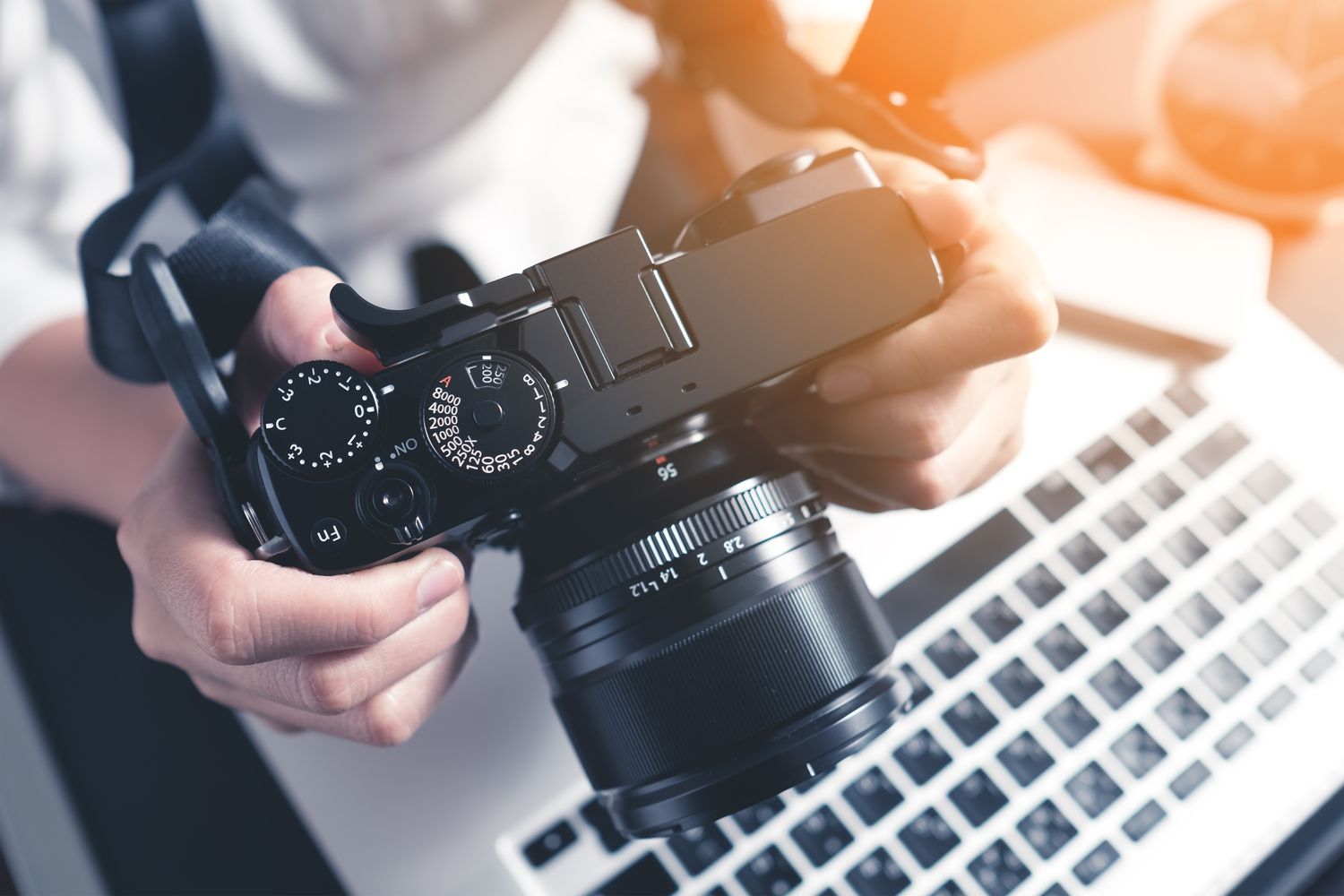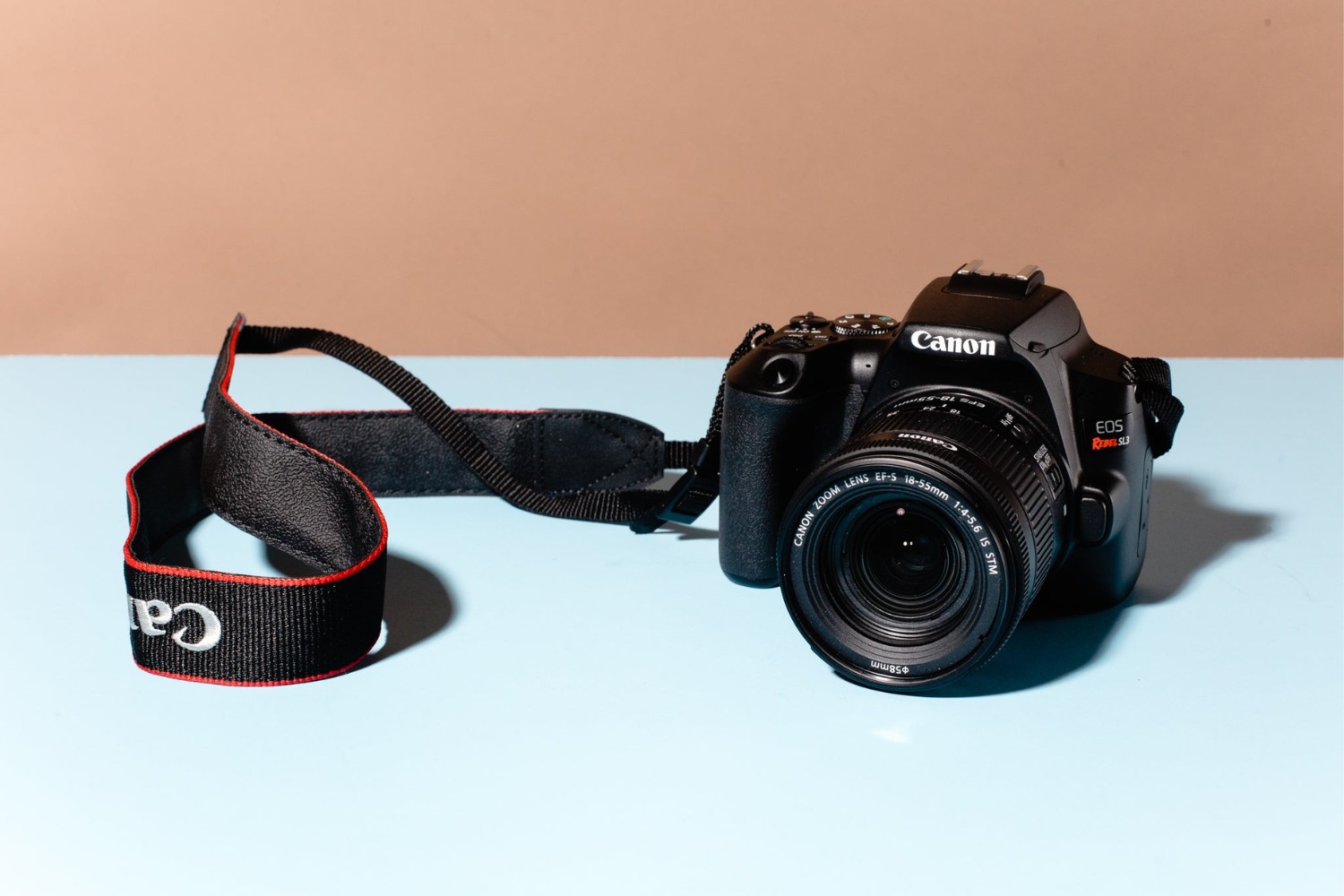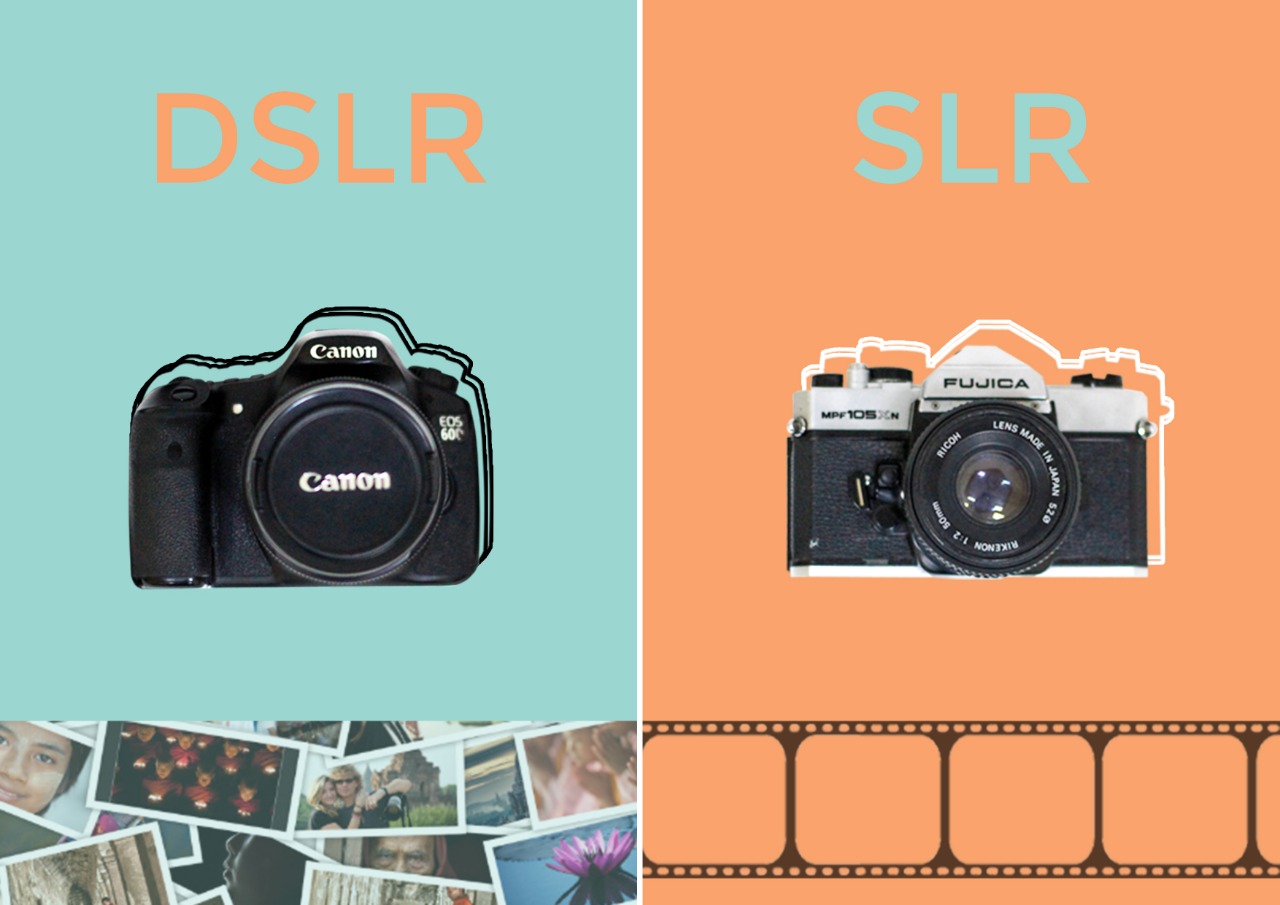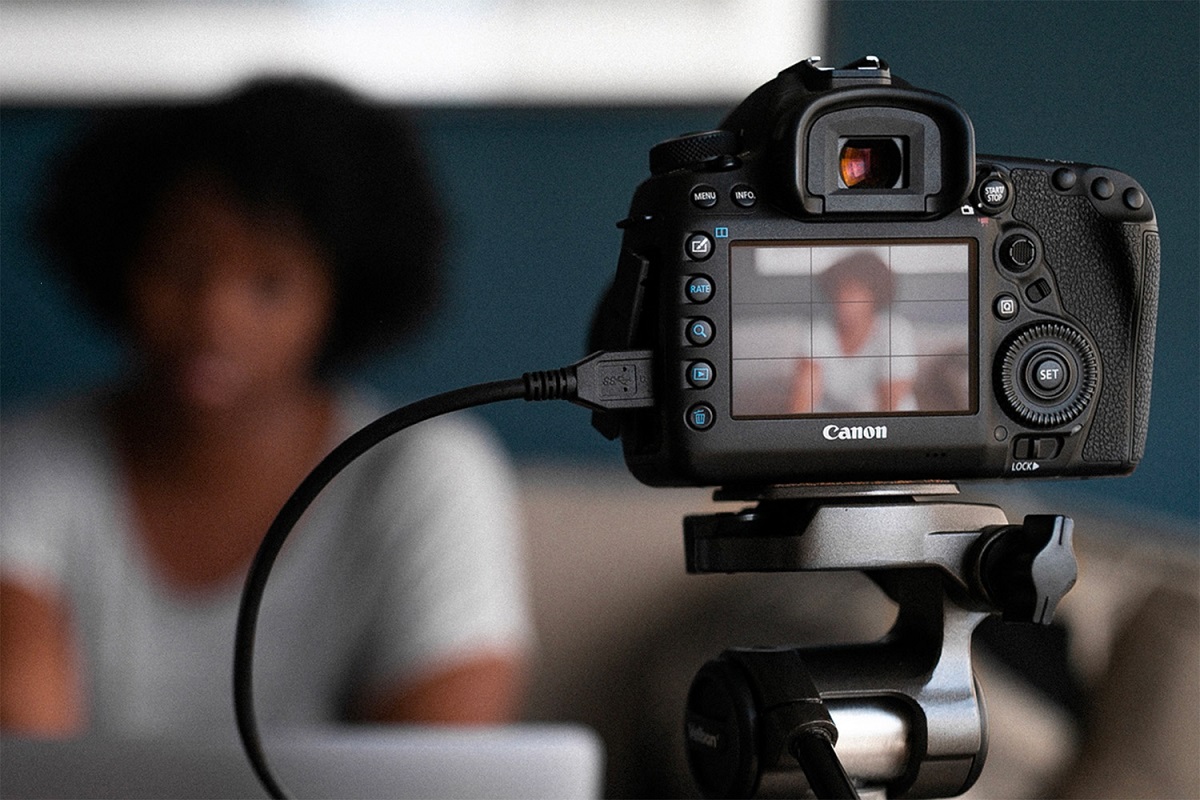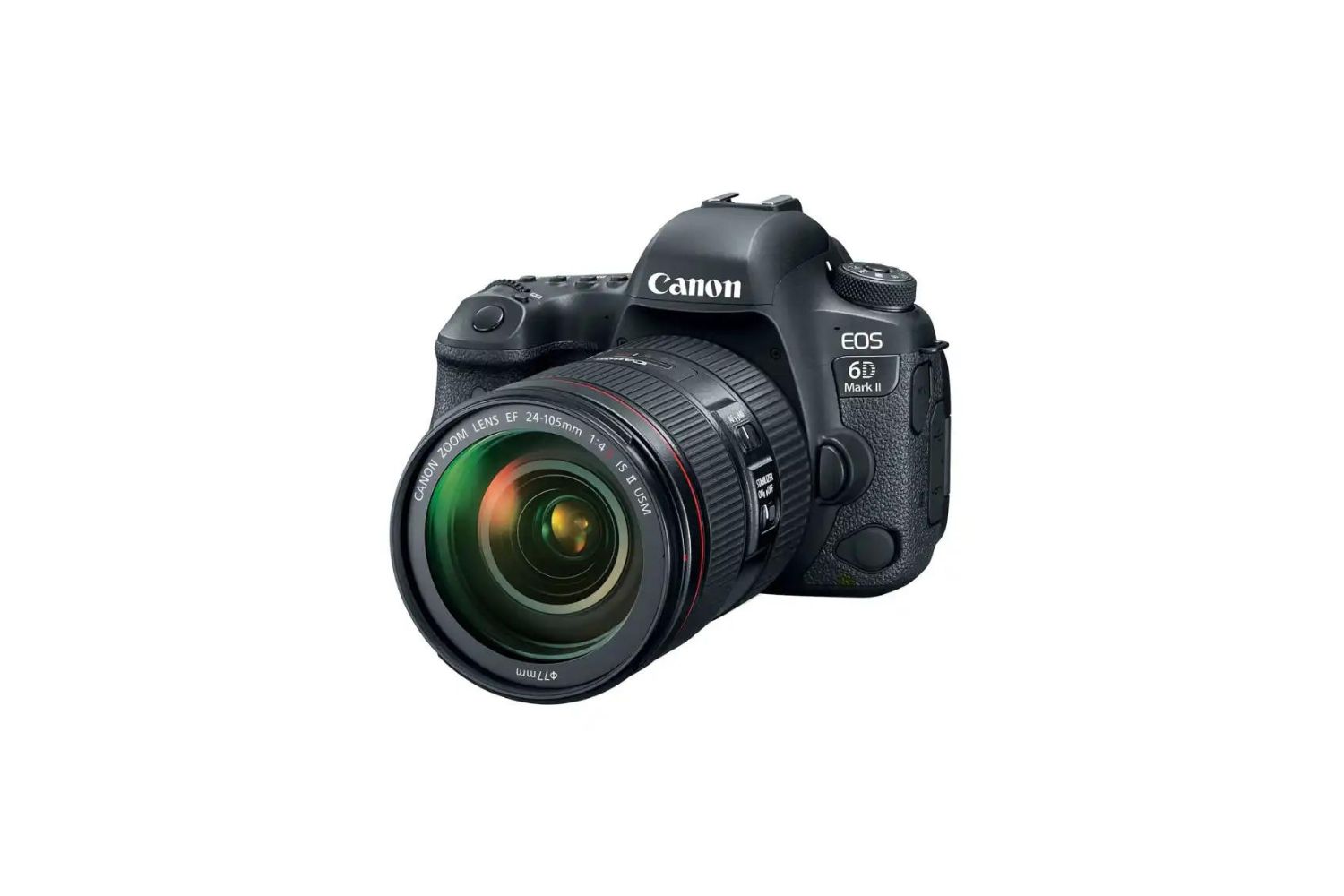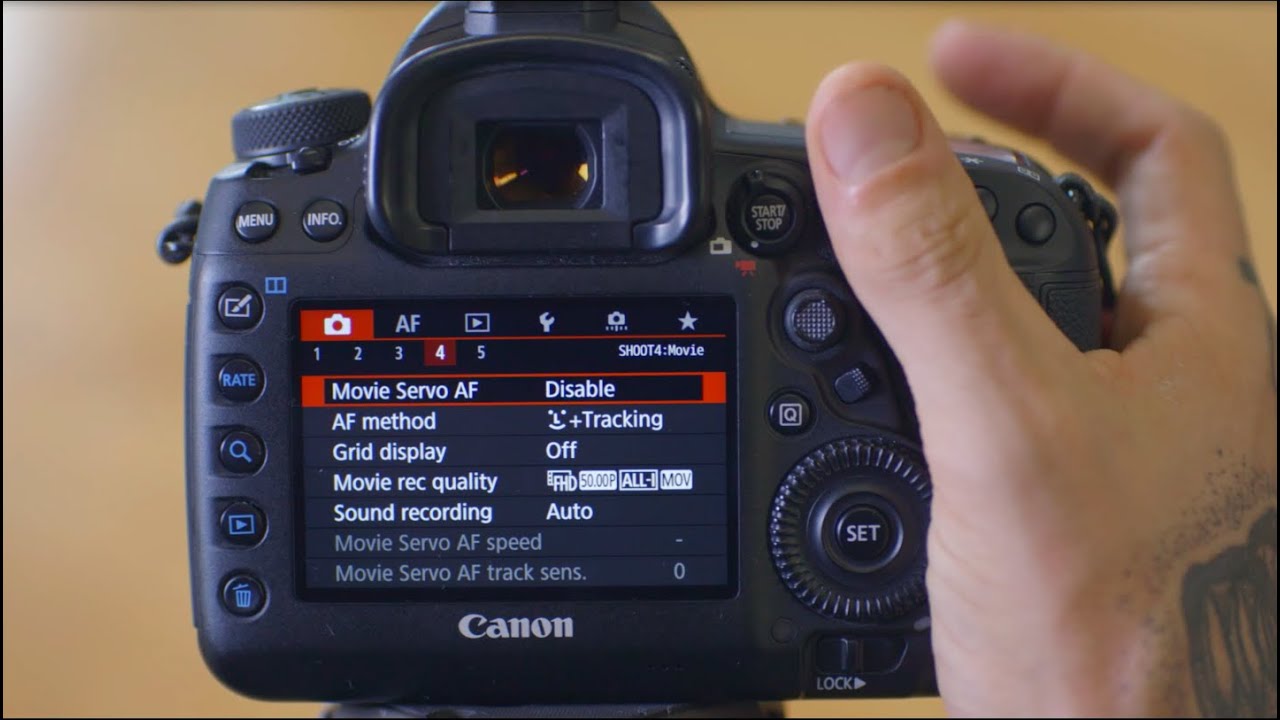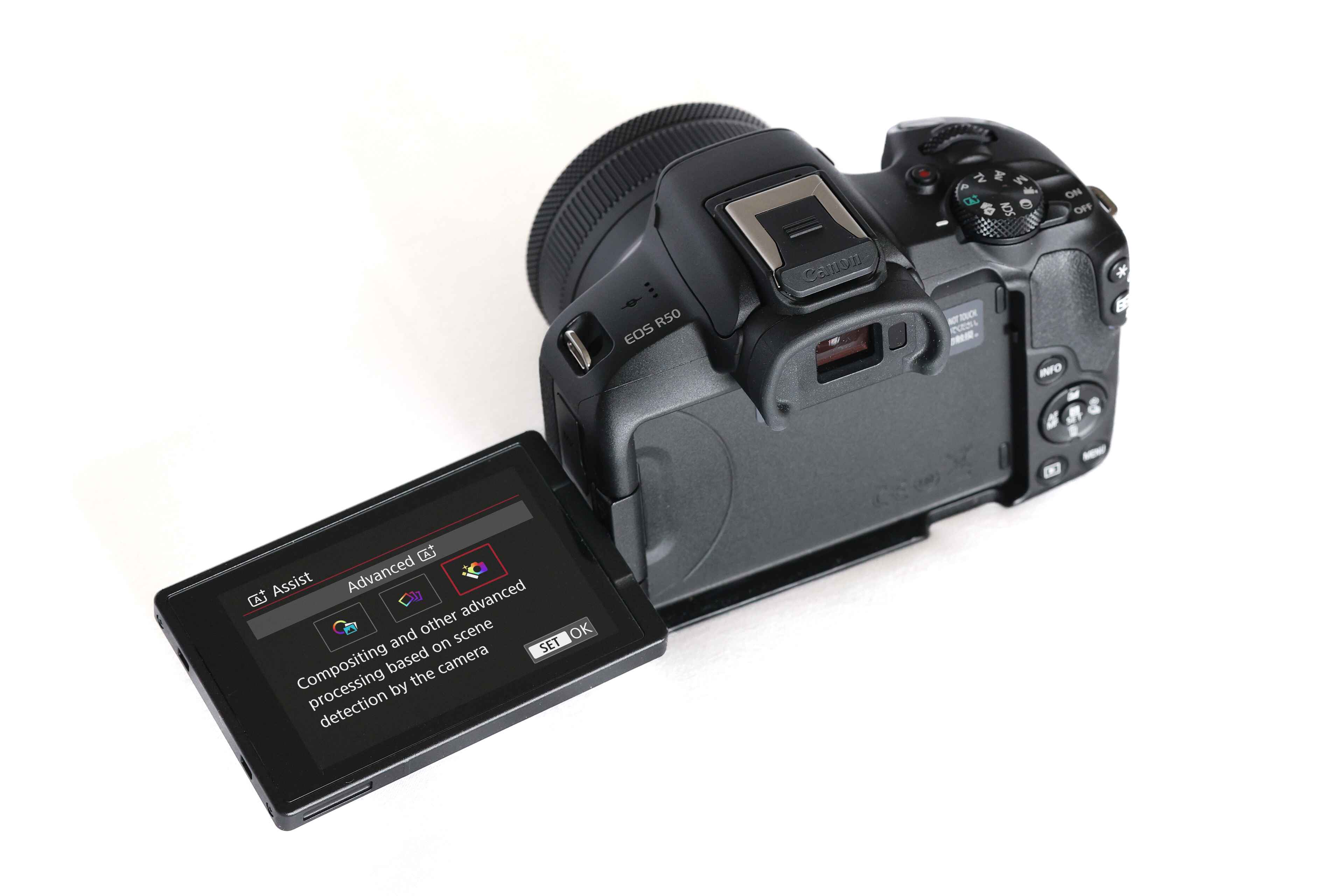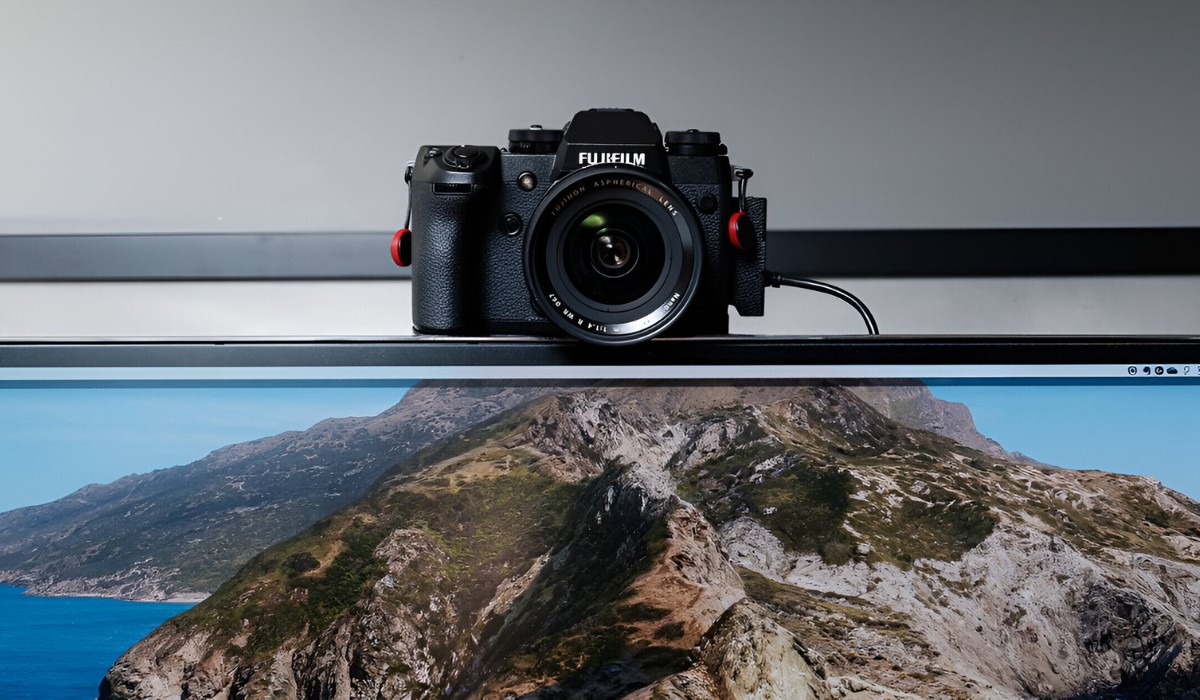Introduction
Introduction
Are you looking to capture life's precious moments with a camera that suits your needs? Understanding the difference between a digital camera and a DSLR (digital single-lens reflex) camera is crucial in making an informed decision. Both types of cameras have their unique features and benefits, catering to varying photography requirements. Whether you're an amateur photographer or a professional seeking the perfect tool for your craft, delving into the distinctions between these two camera types is essential.
The digital camera has revolutionized the way we take photos, offering convenience and versatility in a compact package. On the other hand, DSLR cameras, known for their exceptional image quality and advanced features, are favored by photography enthusiasts and professionals alike. By exploring the key differences and weighing the advantages and disadvantages of each, you can determine which type of camera aligns with your preferences and shooting style.
Understanding the nuances between digital and DSLR cameras empowers you to make an informed choice, ensuring that your photography endeavors are supported by the right equipment. Let's embark on a journey to unravel the disparities between these two camera types, shedding light on their unique attributes and helping you determine which one best complements your photographic aspirations.
Definition of Digital Camera
A digital camera is a device that captures photographs and records videos in a digital format. Unlike traditional film cameras, digital cameras store images electronically, eliminating the need for film rolls and allowing for immediate image preview and deletion. The heart of a digital camera is its image sensor, which converts light into electronic signals to produce digital images. These cameras come in various forms, including compact point-and-shoot models, advanced compact cameras, and mirrorless interchangeable-lens cameras.
One of the defining features of digital cameras is their LCD screen, which allows photographers to preview and review captured images instantly. This feature enables users to assess the quality of their shots, adjust settings, and retake photos if necessary. Additionally, digital cameras often offer built-in image processing capabilities, allowing users to apply filters, adjust colors, and enhance photos directly on the camera.
Another hallmark of digital cameras is their compact and lightweight design, making them highly portable and suitable for everyday photography. These cameras are user-friendly, often equipped with automatic shooting modes that cater to beginners and casual photographers. Furthermore, digital cameras typically utilize rechargeable batteries and offer connectivity options such as Wi-Fi and Bluetooth for seamless file transfer and sharing.
Overall, digital cameras have democratized photography, making it accessible to a wide range of enthusiasts and casual users. Their ease of use, portability, and instant image preview capabilities have transformed the way we capture and share moments, ushering in a new era of visual storytelling and creativity.
Definition of DSLR Camera
A DSLR (digital single-lens reflex) camera is a sophisticated imaging device that combines the mechanisms of a single-lens reflex camera with digital imaging sensor technology. This fusion results in a powerful tool that offers exceptional image quality, versatility, and advanced control for photographers. At the core of a DSLR camera is its mirror and prism system, which allows users to view the scene through the camera’s optical viewfinder with precise framing and focus accuracy.
One of the distinguishing features of DSLR cameras is their interchangeable lens system, providing photographers with the flexibility to use a wide array of lenses tailored to different shooting scenarios. This capability empowers photographers to achieve varying perspectives, focal lengths, and artistic effects, enhancing the creative potential of their photography.
DSLR cameras are renowned for their superior performance in challenging lighting conditions, thanks to their larger image sensors and advanced image processing engines. This results in higher resolution images with exceptional detail, dynamic range, and low-light performance. Additionally, DSLRs offer comprehensive manual control over exposure settings, autofocus modes, and white balance, catering to the precise requirements of professional photographers and enthusiasts seeking creative autonomy.
Furthermore, DSLR cameras often feature robust construction and ergonomic designs, providing durability and comfort during extended shooting sessions. Many DSLRs are equipped with optical viewfinders that offer a real-time, lag-free view of the scene, allowing photographers to capture decisive moments with precision and confidence. Additionally, these cameras typically support a wide range of accessories, including external flashes, battery grips, and remote triggers, further expanding their capabilities.
In essence, DSLR cameras represent the pinnacle of traditional photography merged with cutting-edge digital technology, offering a comprehensive toolset for photographers to express their creativity and achieve outstanding results across various genres of photography, from portraiture and landscape to sports and wildlife.
Key Differences Between Digital Camera and DSLR Camera
Understanding the distinctions between digital cameras and DSLR cameras is essential for individuals seeking the ideal tool to fulfill their photographic needs. While both camera types serve the purpose of capturing images in a digital format, they differ significantly in terms of features, performance, and versatility. Here are the key differences that set digital cameras and DSLRs apart:
- Image Sensor Size: One of the fundamental differences between digital cameras and DSLRs lies in their image sensor size. DSLR cameras typically feature larger sensors, such as APS-C or full-frame sensors, which contribute to superior image quality, enhanced low-light performance, and greater dynamic range compared to the smaller sensors found in most digital cameras.
- Interchangeable Lenses: DSLR cameras offer the flexibility of interchangeable lenses, allowing photographers to adapt to various shooting scenarios by using wide-angle, telephoto, macro, and specialty lenses. In contrast, most digital cameras have fixed lenses, limiting the range of focal lengths and creative possibilities.
- Viewfinder Type: DSLR cameras utilize optical viewfinders that provide a direct, through-the-lens view of the scene, offering precise framing and focus assessment. Digital cameras, on the other hand, often rely solely on electronic viewfinders or LCD screens for composing shots, which may not offer the same level of accuracy and responsiveness as optical viewfinders.
- Manual Controls: DSLR cameras are equipped with extensive manual controls over exposure settings, autofocus modes, and white balance, empowering photographers to fine-tune their shots with precision. While some digital cameras offer manual controls, DSLRs are renowned for providing comprehensive customization options that cater to advanced users and professionals.
- Performance in Low Light: Due to their larger sensors and advanced image processing capabilities, DSLR cameras excel in low-light conditions, delivering superior image quality with reduced noise and enhanced detail. Digital cameras, especially compact models with smaller sensors, may struggle to match the low-light performance of DSLRs.
- Size and Weight: Digital cameras are typically more compact and lightweight than DSLRs, offering portability and convenience for casual photography. In contrast, DSLR cameras, while bulkier, provide a substantial grip and ergonomic design that caters to extended shooting sessions and accommodates a wide range of accessories.
These fundamental differences highlight the unique strengths and capabilities of each camera type, catering to diverse photography styles and preferences. Whether you prioritize portability and ease of use or seek advanced control and image quality, understanding these distinctions will guide you in selecting the camera that best aligns with your creative vision and photographic aspirations.
Advantages and Disadvantages of Digital Cameras
Digital cameras offer a myriad of benefits that cater to the needs of casual photographers, enthusiasts, and individuals seeking a convenient and versatile imaging tool. However, they also come with limitations that may impact certain photography pursuits. Understanding the advantages and disadvantages of digital cameras is crucial in making an informed decision about their suitability for your photographic endeavors.
- Advantages:
- Portability: Digital cameras are often compact and lightweight, making them highly portable and suitable for everyday photography, travel, and casual shooting situations.
- Instant Image Preview: The presence of an LCD screen allows photographers to preview captured images immediately, enabling quick assessment of composition, exposure, and focus.
- User-Friendly Features: Many digital cameras offer automatic shooting modes, scene recognition, and in-camera editing options, catering to beginners and individuals seeking a hassle-free photography experience.
- Connectivity: Digital cameras often incorporate Wi-Fi, Bluetooth, and NFC capabilities, facilitating seamless file transfer, remote control, and instant sharing of images across devices and social media platforms.
- Cost-Effectiveness: Entry-level digital cameras are generally more affordable than DSLRs, providing an accessible entry point for individuals venturing into photography without a significant investment.
- Disadvantages:
- Limited Manual Control: While some digital cameras offer manual settings, they may not provide the same level of customization and control over exposure, autofocus, and other parameters as DSLR cameras.
- Fixed Lenses: Many digital cameras feature fixed lenses, restricting users to a specific focal length range and limiting their ability to experiment with different perspectives and artistic effects.
- Low-Light Performance: Due to their smaller image sensors, digital cameras may exhibit reduced performance in low-light conditions, resulting in increased noise and limited detail compared to DSLRs.
- Lack of Optical Viewfinder: Some digital cameras rely solely on electronic viewfinders or LCD screens for composing shots, which may not offer the same level of accuracy and responsiveness as optical viewfinders found in DSLRs.
- Limitations in Professional Settings: Advanced photography genres such as professional portraiture, sports, and wildlife photography may require the superior performance and versatility offered by DSLR cameras, surpassing the capabilities of digital cameras.
By weighing these advantages and disadvantages, individuals can assess whether digital cameras align with their specific photography needs and preferences. While digital cameras excel in portability, ease of use, and connectivity, they may present limitations in terms of manual control, lens flexibility, and performance in demanding shooting conditions.
Advantages and Disadvantages of DSLR Cameras
DSLR (digital single-lens reflex) cameras offer a comprehensive suite of advantages that cater to the diverse needs of photography enthusiasts and professionals. However, they also come with certain limitations that warrant consideration when evaluating their suitability for specific photography pursuits. Understanding the advantages and disadvantages of DSLR cameras is pivotal in making an informed decision about utilizing these powerful imaging tools.
- Advantages:
- Exceptional Image Quality: DSLR cameras are renowned for their superior image quality, characterized by high resolution, exceptional detail, and impressive dynamic range, attributed to their larger image sensors and advanced image processing engines.
- Interchangeable Lenses: The ability to use a diverse range of interchangeable lenses empowers photographers to explore various perspectives, focal lengths, and creative effects, elevating the artistic potential and versatility of their photography.
- Advanced Manual Control: DSLR cameras provide comprehensive manual control over exposure settings, autofocus modes, white balance, and other parameters, enabling photographers to fine-tune their shots with precision and creativity.
- Superior Performance in Low Light: Thanks to their larger sensors and advanced image processing capabilities, DSLR cameras excel in low-light conditions, delivering reduced noise, enhanced detail, and exceptional performance in challenging lighting scenarios.
- Optical Viewfinder: The optical viewfinders found in DSLR cameras offer a real-time, lag-free view of the scene, providing precise framing, focus assessment, and a direct connection to the subject, enhancing the overall shooting experience.
- Disadvantages:
- Bulky Design: DSLR cameras are typically bulkier and heavier than digital cameras, which may pose challenges in terms of portability and convenience, especially during travel and casual shooting situations.
- Learning Curve: Mastering the extensive features and manual controls of DSLR cameras may require a learning curve, particularly for beginners and individuals transitioning from simpler camera systems.
- Cost and Investment: The initial cost of DSLR cameras and the investment in additional lenses and accessories may present a significant financial commitment, especially for those entering the realm of professional photography.
- Complexity in Operation: The multitude of features, settings, and customization options in DSLR cameras may overwhelm some users, requiring a deeper understanding of photography principles and technical aspects to unleash their full potential.
- Limitations in Casual Settings: For casual photography and everyday use, the bulk and complexity of DSLR cameras may be perceived as overkill, overshadowing the simplicity and convenience offered by digital cameras.
By evaluating these advantages and disadvantages, photographers can determine whether DSLR cameras align with their specific creative vision and photographic requirements. While DSLRs excel in image quality, manual control, and versatility, their bulk, learning curve, and financial investment may pose considerations for individuals seeking the ideal balance between performance and practicality.
Which Camera Is Right for You?
Choosing between a digital camera and a DSLR (digital single-lens reflex) camera depends on your specific photography needs, preferences, and creative aspirations. Both camera types offer unique advantages and cater to different styles of photography, making it essential to consider several factors when determining which one aligns with your vision and objectives.
Consider a Digital Camera If:
- You prioritize portability, convenience, and ease of use for everyday photography, travel, and casual shooting situations.
- Instant image preview, user-friendly features, and seamless connectivity are essential for sharing and enjoying your photos on the go.
- You seek a cost-effective entry point into photography without the complexity and investment associated with interchangeable lenses and advanced manual controls.
- Your primary focus is on capturing spontaneous moments, family gatherings, and everyday experiences with a compact and versatile imaging device.
Consider a DSLR Camera If:
- You prioritize exceptional image quality, advanced manual control, and the versatility of interchangeable lenses for creative exploration and professional pursuits.
- You are passionate about exploring diverse photography genres, such as portraiture, landscape, sports, wildlife, and low-light photography, where superior performance and creative flexibility are paramount.
- You are willing to invest in a comprehensive imaging system that offers long-term growth, adaptability, and the potential for expanding your skills and artistic expression.
- You value the optical viewfinder experience, precise framing, and the tactile feedback of a robust and ergonomic camera system during your photographic endeavors.
Ultimately, the right camera for you hinges on a balance of practical considerations, creative aspirations, and the specific contexts in which you intend to use the camera. Whether you prioritize portability and simplicity or seek advanced control and exceptional image quality, understanding the distinct strengths of digital cameras and DSLRs will guide you in selecting the ideal tool to bring your photographic vision to life.
Conclusion
Exploring the differences between digital cameras and DSLR cameras unveils a rich tapestry of features, capabilities, and creative possibilities, empowering photographers to make informed decisions based on their unique needs and aspirations. While digital cameras excel in portability, ease of use, and instant sharing, DSLR cameras offer unparalleled image quality, manual control, and artistic versatility. By understanding the distinct advantages and disadvantages of each camera type, individuals can navigate the diverse landscape of photography and select the ideal tool to realize their vision.
Whether you are an enthusiast capturing everyday moments or a professional delving into the intricacies of visual storytelling, the choice between a digital camera and a DSLR camera is deeply rooted in your creative preferences, shooting style, and the contexts in which you intend to wield your photographic instrument. Embracing the portability and simplicity of a digital camera may align with spontaneous photography and casual shooting scenarios, while embracing the power and flexibility of a DSLR camera may elevate your pursuit of artistic excellence and professional endeavors.
Ultimately, the journey of photography is as diverse as the individuals who embark on it, and the camera you choose becomes an extension of your vision and expression. Whether it’s the compact versatility of a digital camera or the boundless potential of a DSLR, the world of photography awaits your unique perspective, ready to be captured and shared with the world.







